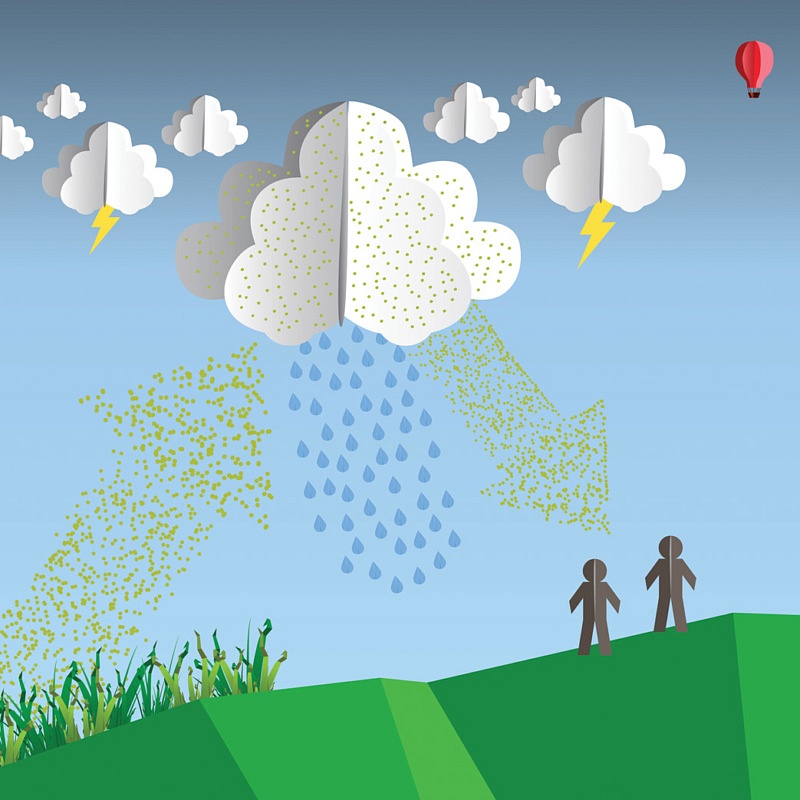In fall 2016, nine people died when strong storms moved across southeastern Australia. They didn’t die from tornadoes, damaged power lines, flash flooding or fallen trees. Instead, they died from thunderstorm asthma, after high grass pollen concentrations dispersed by strong, gusty winds caused severe respiratory problems for thousands.
Now, UGA researchers are exploring new ways to predict thunderstorm asthma outbreaks that may one day provide early warnings for health professionals, emergency management officials and residents in affected areas.
The study, published in the Journal of Applied Meteorology and Climatology, is one of the first to specifically include well-known aspects of thunderstorm diagnostics often used by meteorologists to assess storm severity.
“Thunderstorm asthma is a very complex phenomenon and involves interactions of allergens like grass pollens, thunderstorms and susceptible groups of people,” said lead author Andrew J. Grundstein, professor of geography in the Franklin College of Arts and Sciences. “Our study may help anticipate significant thunderstorms by employing a technique that helps identify wind magnitudes commonly associated with thunderstorm asthma outbreaks.”
According to the study, the combination of rainfall, winds and lightning from thunderstorms in conjunction with bioaerosols—airborne particles like pollen or mold spores—can worsen asthma symptoms. Rainfall and high humidity rupture bioaerosols, breaking them into smaller fragments more easily inhaled into the lungs. Thunderstorm electrical activity contributes further to fragmentation, and gusting winds can spread the particles ahead of a storm. Several of these factors combined may result in an event reaching epidemic proportions.

In Melbourne, strong winds swept ryegrass pollen from surrounding pastures into the city while a thunderstorm also moved across the area between 5 and 6 p.m., when many residents were likely to be outside after leaving work or school. Downdraft winds pushed the fragmented pollen to ground level, causing respiratory distress for thousands. Emergency services were overwhelmed. More than 8,000 people went to hospitals, and there were more than 2,300 calls for ambulances.
Grundstein’s research team cross-referenced several forecast modeling tools, concluding that strong downdraft winds were a distinct characteristic of this event, a factor that may be useful in developing advance warning systems.
“While this study does not yet provide the capability of predicting thunderstorm asthma outbreaks, our methodology may provide a key piece to the puzzle for alerting public health officials about which storms may trigger an episode and which ones may not,” said co-author Marshall Shepherd, Georgia Athletic Association Distinguished Professor of Geography and Atmospheric Sciences.
That’s particularly good news for Melbourne. Thunderstorm asthma epidemics have occurred there more frequently than anywhere else in the world, Grundstein said.
This story appeared in the fall 2017 issue of Research Magazine. The original press release is available at https://news.uga.edu/releases/article/thunderstorm-asthma/.






